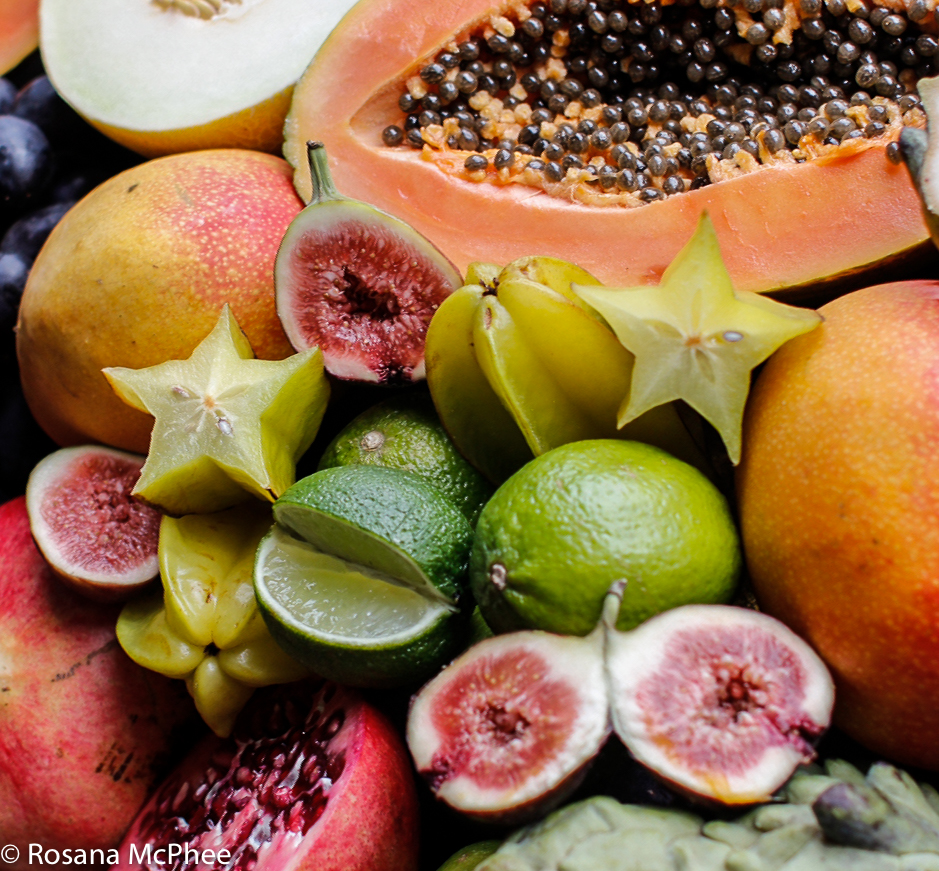
Brazilian food. Quick, what popped into your head? Churrasco? Feijoada? Cassava? A simple plate of rice & beans? Bananas, coconut and pineapples? Brazil may be best known for those fruits in the popular imagination, but, in reality, it has a plethora of Brazilian tropical fruits that grow in abundance all over the country; they are available in the UK.
You might not know it, but some examples of fruits produced in Brazil include cashew fruit (and the nut that grows with it), mangoes and limes. Examples of native fruits include the açaí and the specially developed in Brazil; BRS Vitória grape (a sweet, seedless variety). To promote Brazilian fruit, the trade association, Abrafrutas was created. They are a non-profit organisation set up in 2014 to represent and promote Brazilian fruit to international markets. They work with roughly 70 Brazilian fruit exporting producers.




Brazil has 30 major regions suitable for fruit production, mainly because the country enjoys sunshine the entire year and consistent temperatures. Another interesting fact is that Brazilian producers are advocates of farming sustainably and ethically. There is even an organisation that ensures that farms are ethically certified. Although many fruits grow within the Amazon, the only fruit harvested commercially is the Acai berry. The berry is harvested manually by the local population. What is essential to emphasise is that produce from the Amazon all have to be picked by hand and cannot be cultivated like traditional crops. This makes it challenging to achieve a volume of fruit product without damaging the Amazonian forest. Producers are currently looking at ways to increase production without damaging the forest.

Abrafrutas‘ focus is to promote Brazilian fruit to European and UK consumers helping Brazilian exporters search for business expansion, in partnership with the Brazilian Trade and Investment Promotion Agency (ApexBrasil) through the FRUTAS DO BRASIL project. Limes, mangos, melons, and table grapes are among the top Brazilian tropical fruit exports.
They participate in the brilliant The London Produce Show, one of the UK’s most prominent fresh products events to showcase and promote Brazilian Tropical produce.
Most consumers are unaware of the variety of Brazilian tropical fruit and the almost limitless way it can be used in cooking. The beauty of Brazilian fruit is the natural sweetness inherent in it. The flavour naturally shines through in the simplest of recipes.


Being a native Brazilian myself and having grown up eating these fruits every day, I am delighted to see that a Brazilian organisation is now doing its best to encourage European consumers to seek out these delicious fruits in their own country. I can wholeheartedly attest to Brazilian fruit’s natural and intense sweetness, especially after living here in the UK for over thirty years; now, biting into a fresh Brazilian mango is a tasty reminder of home. Furthermore, there is little need to add much to these fruits for them to create a flavourful dish.
To showcase the natural sweetness and versatility of Brazilian fruit, I have created two recipes for you to enjoy.
The first recipe is my take on a famous cold soup, Gazpacho. I’ve created my version using Brazilian Galia Melon and Lime (widely available in the UK). I used mint as a garnish and feta cheese crumbles to add contrast, a sweet and savoury combination common in Brazilian cuisine.
Cold Brazilian Galia and lime soup recipe

Serves: 4 starters
Easy
Ingredients
400 g Brazilian melon
8 mint leaves
2 tbsp lemon juice
Feta cheese – to taste
Extra Virgin olive oil, drizzle
Method
Blend the melon, mint and lemon juice until smooth.
Keep in the fridge till time to serve.
Crumble the feta in the bowl and drizzle the olive oil before serving
Brazil has over 7,000 km of coastline; thus, the ubiquity of fresh seafood and the availability of fresh fruit make for some toothsome dishes. Next, I re-created a popular Brazilian dish from Bahia, Tapioca, filled with Brazilian produced mango, prawn and lime.
Brazilian Mango, Lime and Prawn Tapioca recipe

Serves: 4
Ingredients
Pancake:
250g cassava/tapioca starch, hydrated*
A pinch of salt (optional)
Filling:
1 large Brazilian mango, diced
1 tbsp of white chia powder
Juice of one lime
200g Prawns, fresh
Chilli, to taste
Method Pancake
1) Sift the Tapioca over a very hot skillet making sure to cover the surface; cook for 2 minutes
2)Turn the Tapioca after 2 minutes on the other side, and cook a further minute.
3)Add the fillings of choice and fold them. Serve
Filling:
1) In a pan, lightly cook the mango and its juices, lime juice and chia hydrated with a spoon of water
2)Add the prawn and cook for 2-3 minutes until they are pink and chilli if using it.
3) Add the filling to the Tapioca and fold it
A perfect snack!
*- Widely available in Asian, Brazilian and Portuguese shops – Tapioca starch and already hydrated ( in Brazilian shops)
*To hydrate the cassava starch:
Hydrate the Tapioca starch to create a more coarse flour. Slowly add water to the cassava starch until grainy. Once the Tapioca is hydrated, sieve it. Store in the fridge for up to a week in a tight lidded container.
I hope you enjoy making (and eating) these recipes as much as I did!

Disclosure: This is a sponsored post by The London Produce Show and Abrafrutas, written by me – all fruits have been gifted. All views are my own.



